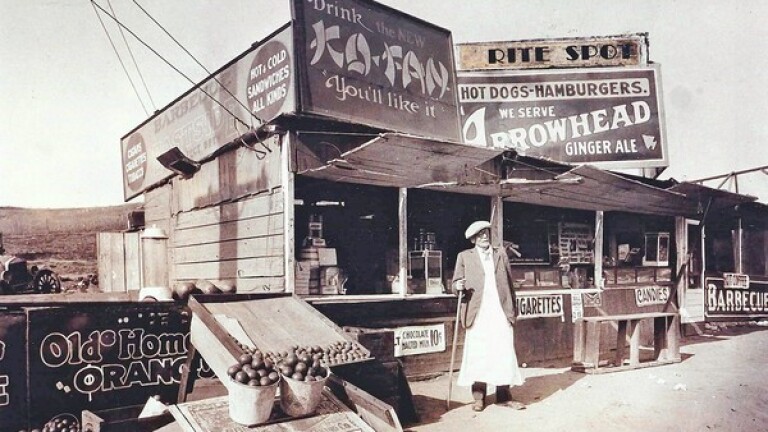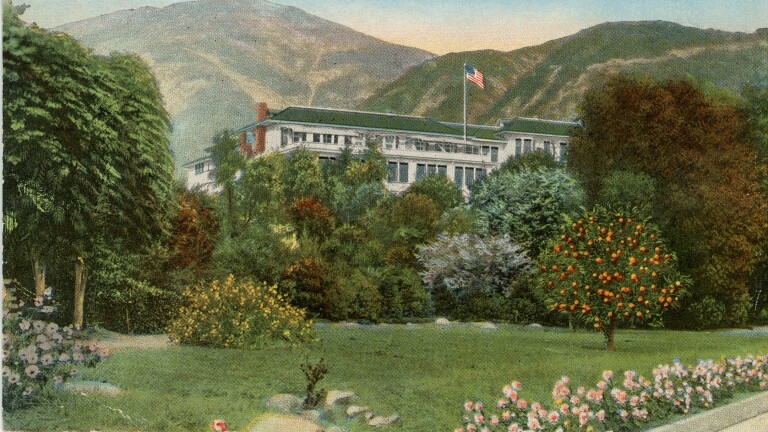When Long Beach Built a Rainbow-Shaped Pier

It's safe to say that a more distinctive pier never adorned the Southern California shore. Unlike the many pleasure piers that stretched beyond the breakers only to dead-end above the ocean's swells, the Rainbow Pier in Long Beach extended more than a quarter-mile into the cold Pacific before arcing back to shore. The 3,800-foot-long structure resembled a giant horseshoe, or a rainbow -- hence its name.
But its shape was not all that made the Rainbow Pier unique. It was also among the first of its kind designed explicitly for the automobile. Built atop a granite breakwater, the pier's roadway could easily support the weight of a motorcar. And the fact that the road returned to shore eliminated the need for awkward turnarounds.
"When it is finished it will be possible to board an automobile any dark night in Los Angeles, bowl over a continuously illuminated boulevard all the way from the metropolis via the great white way of Huntington Park to Long Beach, and then out from shore...over the ocean," the Los Angeles Times reported in 1913, long before the pier was actually built.

In its quest to become the region's premier seaside resort, Long Beach had craved such a structure as early as 1909. But securing the necessary funding took nearly two decades. By the time residents approved $1.4 million in construction bonds in May 1928, the pier had become part of a larger program that transformed the Long Beach shoreline in the name of commerce. As crews dumped some 300,000 tons of granite boulders (quarried from the hills near Riverside) to build the pier's base, nearby other workers reclaimed eight acres of land for a new, 15,000-seat civic auditorium that would be encircled by the pier. Construction also coincided with $2.7 million worth of improvements to Long Beach's inner and outer harbors.
When it was completed in 1931, the Rainbow Pier enclosed a 40-acre Rainbow Lagoon whose still waters welcomed boaters and swimmers. Motorists came for the 3,800-foot drive, entering the pier at Linden Avenue and exiting at Pine, while pedestrians crowded onto a wooden free-speech platform known for spirited political debates. Photographers were also fond of the pier, as the images above and below attest.
By the 1960s, however, wave action and tidal forces had begun to undermine the pier, and Long Beach, flush with oil royalties, eyed Rainbow Lagoon as potential real estate. By 1966, a massive land reclamation project created the area home today to the Long Beach Convention Center and the Aquarium of the Pacific, while Shoreline Drive -- a six-lane thoroughfare linking the 710 freeway to Alamitos Avenue -- had replaced the city's graceful Rainbow Pier.












